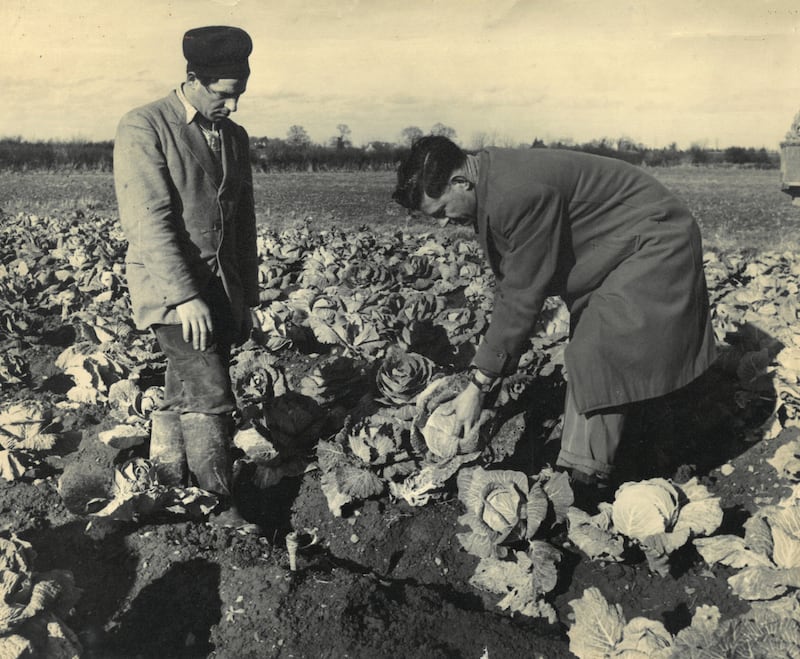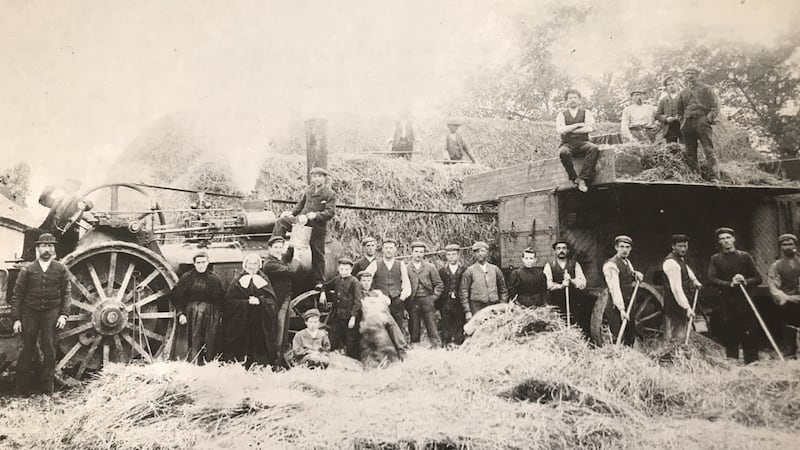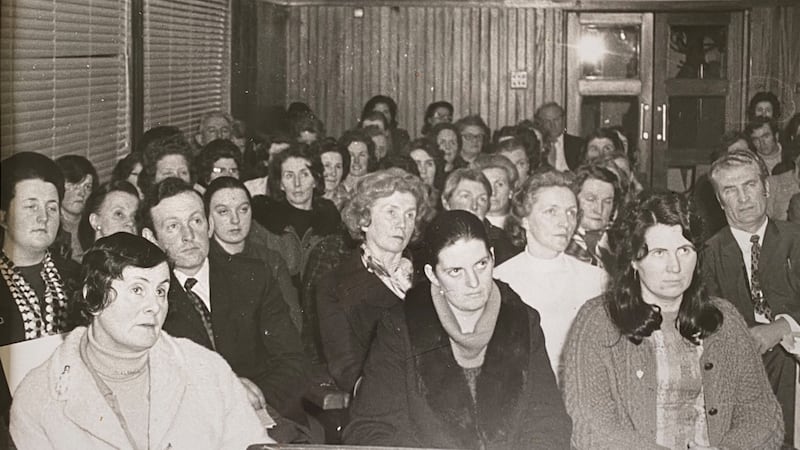Rural Ireland faces profoundly uncertain times at the moment. Since the 1970s, the Common Agricultural Policy (CAP), the European Union’s vast fund for European farmers, has been a vital source of financial support for Irish farmers and their families. Because of the way that prevailing economics work mostly against them, they might not have survived on the land without it.

Now the CAP is to be amended again from 2023 and while the European Commission states that this “aims to foster a sustainable and competitive agricultural sector that can support the livelihoods of farmers and provide healthy and sustainable food for society, as well as vibrant rural areas”, the jury is out on whether it will be positive for Irish farmers and rural Ireland.
What is clear is that direct payments will be reduced and measures that farmers will have to undertake, and which will restrict the operation of their traditional enterprises, will increase. If access to compensation for Irish farmers under the new CAP is not balanced with the demand for ecological compliance “some of our most productive farmers will see their incomes devastated” Irish Farmers’ Association (IFA) president Tim Cullinan said at the recent nationwide protest over what the IFA views as government inaction on this.
Fortunately, rural Ireland has faced profound uncertainty before, much more profound than what it faces currently, and it came through remarkably well. There is a popular memory of historical adversity in rural Ireland but there is not, by the same token, an appreciation of how it was overcome. The widespread retrospective is that Irish agriculture was simply backward for far too long, and that well into the 20th century Irish rural life was characterised chiefly by poverty and misery.

Curiously, in parallel with this there is also recognition that Irish agriculture and rural Ireland today are nonetheless preternaturally removed from recent history, with Irish farming and food processing technically advanced and life in rural Ireland characterised by relative prosperity and wellbeing.
How Irish agriculture and rural Ireland came so far so quickly tends to go unquestioned, with the assumption being that it just happened, or that the CAP, for instance, was a magic wand. In reality, the transformation of rural Ireland required an accumulation of decisive interventions, the success of which should give great heart, as well as inspiration, to those concerned with its contemporary fate.
The first intervention that contributed to the gradual transformation of rural Ireland came courtesy of Horace Plunkett. In the late 1800s he rallied the support of Irish nationalist and unionist politicians behind a call on the British government for a devolved department of agriculture in Ireland. The Department of Agriculture and Technical Instruction for Ireland (DATI) duly opened in Dublin in 1900.

Plunkett wanted an Irish department because he knew that the poor, post-Famine, fortunes of rural Ireland could only be reversed if rural Ireland had its own governmental agency working specifically on its behalf. He envisaged the department promoting several bespoke initiatives for rural Ireland but especially in education.
At that time, Irish farms were being transferred to the ownership of their farmers from the Anglo-Irish landlord class, but Plunkett understood that this would only be of tangible benefit if they farmed their new possessions proficiently, effectively as trained agriculturalists. DATI, in conjunction with the new county councils, instituted under the 1898 Local Government Act, would dispatch advisors, qualified to the highest international standards, to every community in rural Ireland. As a result of their interactions with farmers, Irish farms would not be farmed better immediately but they would be incrementally, and with each succeeding generation.
A second, somewhat unforeseen, dividend from this first intervention flowed from interactions between female advisors and farming women. Three types of advisor had been commissioned, the general agricultural instructor, the horticultural and beekeeping instructor and the poultry-keeping and butter-making instructresses, who were exclusively female. The instructresses were typically graduates of the globally pioneering course at the Munster Institute in Cork (now part of UCC) and worked for decades with farmers’ wives and daughters to develop, primarily, the poultry activities that were a feature of most Irish farms and were generally their purview. The instructresses educated farming women about, for example, pedigree hens and the production of high-quality eggs, and the improved incomes that accrued secured many Irish family farms and, indeed, set them up for future expansion.

When from the mid-20th century most Irish farms began specialising, and moved away from poultry-keeping, many of the instructresses were requalified as farm home management advisors and, once again, their interactions with farming women were lucrative. By specialising, Irish farms were making the transition from subsistence to commercial farming and in becoming business units it was vital that their financial affairs were in order. Farming women had traditionally managed budgeting on Irish farms and in this regard, therefore, their interactions with the farm home management advisors were often of huge importance. Women had been discriminated against in the advisory service; being given access only to specific roles, and being expected to work only with farming women, but this had, ironically, empowered them and the farming women with whom they worked. Moreover, it was critical to progress in rural Ireland.
Advisors were agricultural scientists but for rural Ireland to continue to progress from the mid-20th century, it was clear that scientists dedicated to research, in areas like soil science, were needed to complement them, enhancing the knowledge that they were transferring to farmers. This prompted a second intervention that contributed to the transformation of rural Ireland, the establishment of An Foras Talúntais (AFT), the Agricultural Research Institute, in 1958, and the beginning of a new educational horizon in rural Ireland, as lab- and field-based scientists started to feed their research findings to advisors who in turn interpreted them according to local circumstances and passed them on to farmers for appropriate application.
This was not just a one-way process either, as farmers and advisors increasingly conveyed their own discoveries, made on the ground, and research questions back along the educational chain. The model for this came from the US and was shaped initially following the second World War, by the Marshall planners based in Dublin. In European terms it was, and remains, uniquely innovative. The approach was formalised fully in two stages, with the nationalisation of the county advisory services as An Chomhairle Oiliúna Talmhaíochta (ACOT) in 1980 and the integration of ACOT and AFT in 1988, creating Teagasc.
In the mid-20th century, too, there was a third intervention that contributed to the transformation of rural Ireland, the foundation of the farmer representative organisations. Since Irish independence in 1922, the interests of Irish farmers had been a priority of successive governments, but their policies were often of dubious value to rural Ireland. For instance, the tillage drive of the Fianna Fáil governments in the 1930s was well-meaning, encouraging farmers to diversify and providing smaller farmers with a new enterprise, but it was nevertheless wrongheaded.
Muintir na Tíre from 1937 and Macra na Feirme from 1944 were both national voluntary organisations founded to steer rural Ireland in a more sustainable direction. Governments responded to their ideation in this area but as both stayed apolitical farmers still lacked adequate representation. Out of them, consequently, and with a determination to engage government emerged the Irish Creamery Milk Suppliers’ Association in 1950 and the IFA in 1955. From here on, policymaking would be subject to concerted scrutiny by Irish farmers and rural Ireland would have a constant voice.
Finally, the intervention of the CAP, after Ireland joined the EEC in 1973, was decisive in contributing to the transformation of rural Ireland, but it was so only because of the renewed efforts of farmers working with advisors, research scientists and their representative organisations. The investment opportunities that the CAP presented were only conspicuously successful in rural Ireland because it, under all of its previous amendments, had its full potential unlocked by them interacting in combination. In the midst of the uncertainty in the face of the latest amendment to the CAP it is crucial to reflect on what has been achieved in rural Ireland over the past 120 years, and how it has been achieved, if solutions are to continue to be found.
Dr Mícheál Ó Fathartaigh is author of Developing Rural Ireland: A History of the Irish Agricultural Advisory Services (Wordwell Books, 2021, €30).









